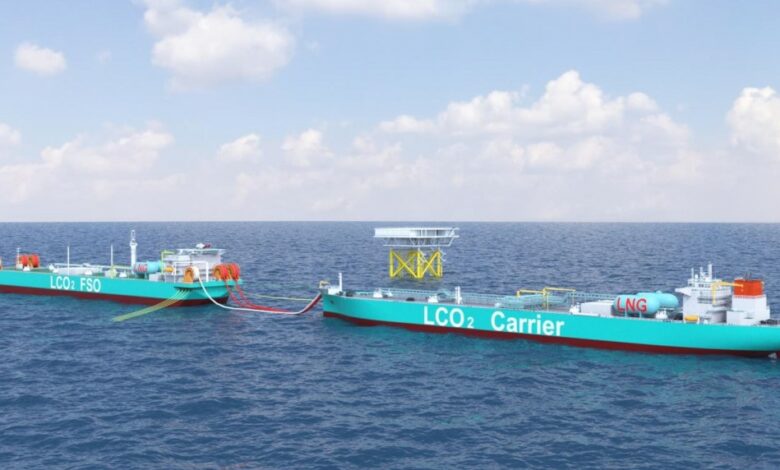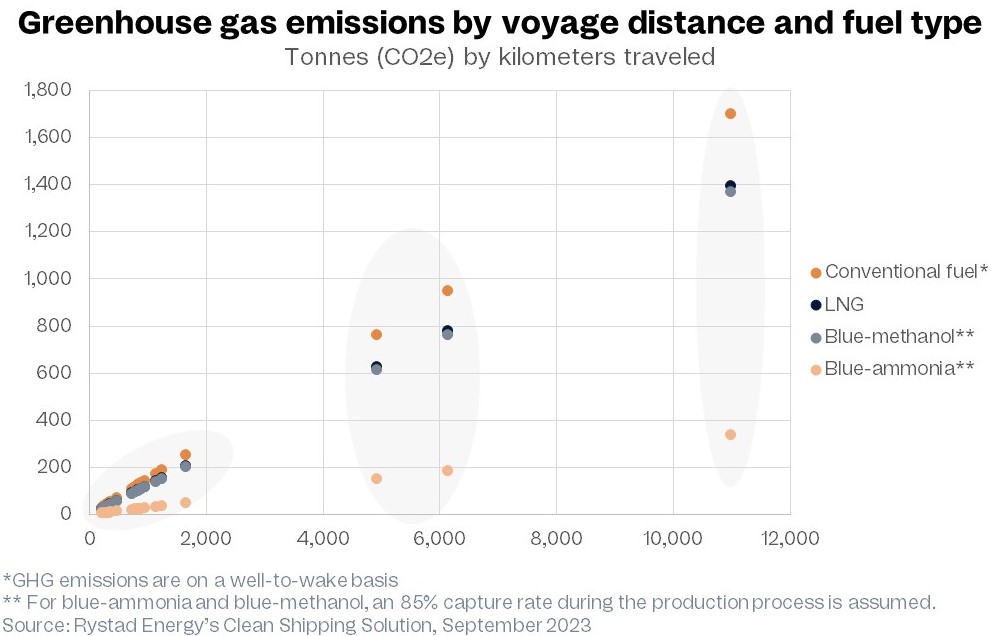CO2 transport fleet to ship over 90m tonnes annually by 2030: Rystad

The transportation of carbon dioxide is taking to the seas as emitters look for flexible ways to move captured carbon to offshore storage projects, with a fleet of 55 carriers required by 2030.
Rystad Energy predicts that, based on planned carbon capture projects, more than 90m tonnes per annum (tpa) of CO2 will be shipped by the end of the decade, volumes requiring 48 terminals to handle the import and export of the gas.
As the global CCUS market expands, a significant hurdle in the value chain is the lack of available transportation and storage networks for projects. Onshore pipelines are the most common mode currently, with 330 expected to be operational by 2030. These are ideal for transporting large quantities of CO2 to onshore storage sites or coastal terminals. Offshore pipelines are larger, transport captured carbon to underwater storage sites and are expected to play a vital role in the supply chain in the coming years. CO2 shipping is the third piece of the puzzle and the most flexible solution for carrying carbon emissions over long distances at a relatively low cost.
The shipping industry relies on emissions-heavy conventional fuels like maritime diesel or low-sulphur fuel oil, calling into question the environmental impact of the process. The GHG emissions over shorter distances may be relatively low, but the impact multiplies quickly over longer journeys.
Based on Rystad’s research of CO2 shipping routes that could come online in 2030, long-distance shipping could emit as much as 5% of the total CO2 shipped. Switching to LNG as the shipping fuel could cut emissions by 18%, and blue methanol would result in a 20% drop while the use of blue ammonia would slash emissions from the shipping process by up to 80%.

GHG emissions for marine fuels are calculated well-to-wake, with emission estimates being based on a vessel with a 25,000 cubic meter capacity.
The North Sea is set to take centre stage in the CO2 shipping surge due to its proximity to major populated areas in Northern Europe. Norway looks set to account for about 30% of all shipped CO2 globally in 2030 with 26m tpa. The Netherlands follows with 23m tpa, and the UK, with about 20m tpa of forecast shipping volumes. These totals include the shipping of domestically captured CO2 plus imports from other countries.
France is expected to ship 17m tpa of CO2 in 2030, followed by Belgium at 13m tpa. These countries do not have ample opportunities to store their CO2 emissions domestically, so the chance to ship CO2 to neighbouring European countries will help fast-track CCUS developments. Australia will also be a significant player in the global market, shipping and storing CO2 from domestic projects and neighbouring Asia-Pacific countries like Japan.
The Northern Lights Project in Norway is set to be the first open-source CO2 transport and storage network when it opens in early 2025. The project will receive domestically shipped CO2 and volumes from northwest Europe at its onshore terminal before piping and storing the gas under the seabed. Phase one of the project will store up to 1.5 million tpa of CO2.
Rystad added that most of the proposed shipping routes – including those in Europe and around Australia – were no more than 2,500 km. However, planned routes between Japan, Malaysia and Australia would involve sailing more than 5,000 km. The longest journey announced to date would be between South Korea and Saudi Arabia, a one-way trip of at least 12,000 km.
